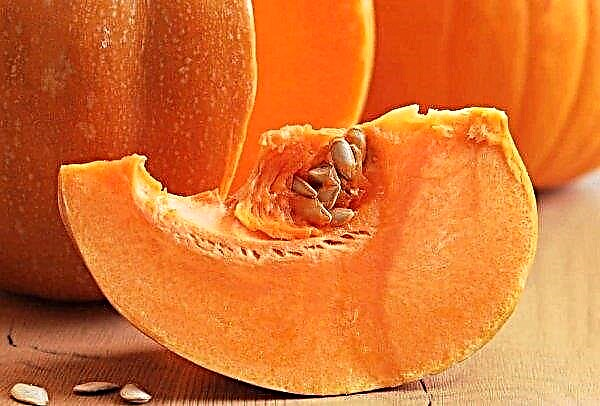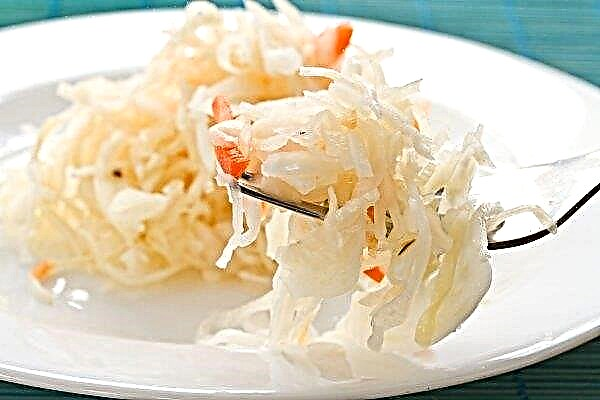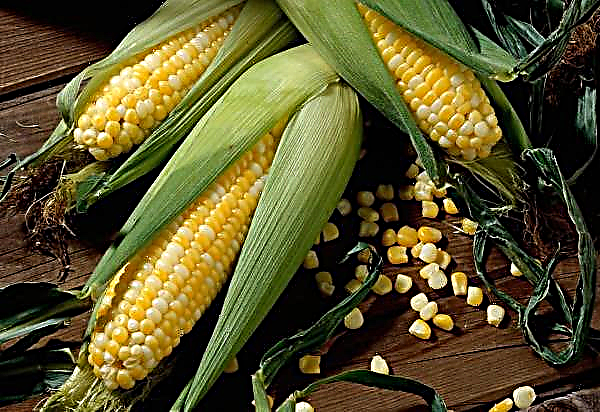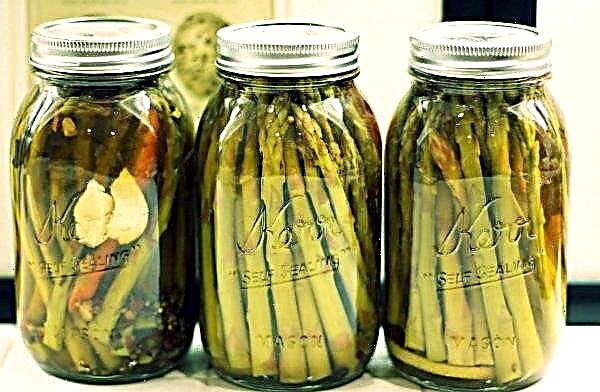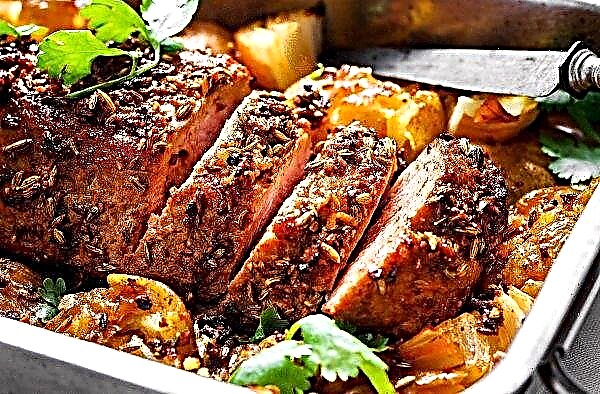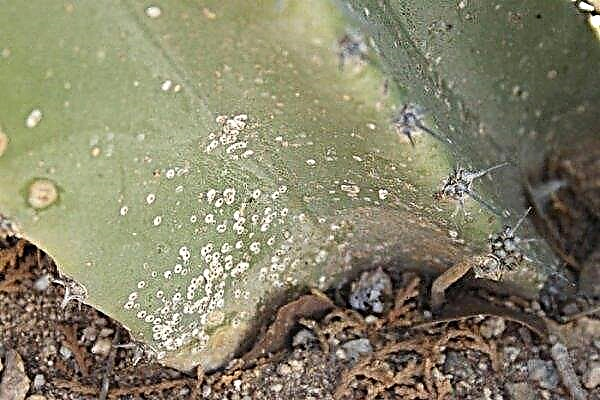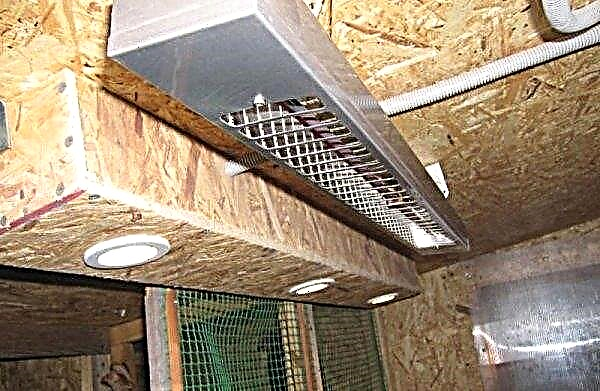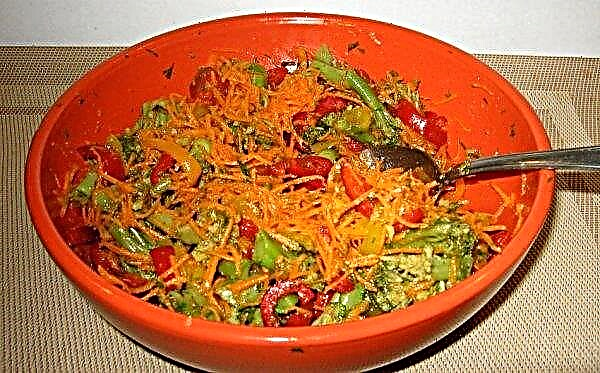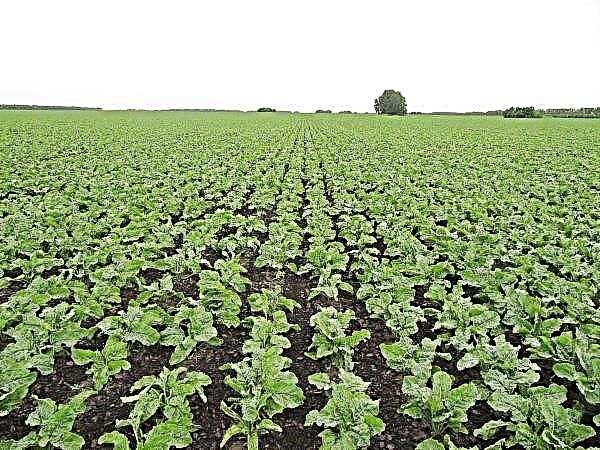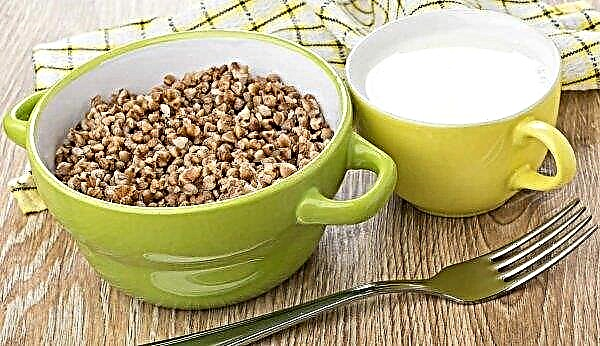Gymnosperm pumpkin is gaining popularity among gardeners, it is planted to obtain high-quality pulp used in cooking, and very useful, and most importantly - unusual seeds. The article discusses the detailed characteristics of gymnospermous pumpkin, as well as the features of growing plants at home.
Variety Description
Gymnospermis, or hard-bark - This is a type of pumpkin, the uniqueness of which lies in the seeds: they grow "naked", without a hard shell. A detailed description of this type of pumpkin is presented in the table.
| Appearance | Description |
| Fruit size | Small, on average 5 kg. |
| Fruit shape | Round, flattened on both sides. |
| Leaf shape | Bright green, five-lobed, large |
| Colour | Green, yellow, red, or combines several colors, depending on the variety. |
| Flowers | Mostly male, up to 400 pcs., Female - up to 80 pcs. on 1 plant. The buds are large, bright yellow. |
| Seeds | Medium, covered with a thin film of yellow, dark green, without husks. |
| Peel | Very hard, but thin. |
| Peduncle | Faceted, with deep grooves and 5-8 scars. |
| Root | Powerful and long. |
The best varieties of gymnospermous pumpkin:
Benefit
Pumpkin is cultivated to produce very healthy and delicious pumpkin seeds.
These seeds have the following properties:
- have an antioxidant effect due to the content of vitamins A and E;
- make up for the deficiency of vitamins and minerals in the body;
- improve the genitourinary system in women and men;
- restore reproductive function;
- activate bile secretion, improve liver function, stimulate intestinal motility and promote normal stomach function;
Did you know? Pumpkin is called one of the oldest cultures on the planet, and the historical homeland of the plant considered North America.
- normalize metabolism;
- restore the water-lipid balance of the skin;
- increase physical and mental performance;
- cleanse the body of toxins and toxins;
- strengthen immunity;
- reduce the risk of oncology, allergies and chronic diseases;
- have a calming effect;
- restore bone density, have a positive effect on joints.

Harm
Pumpkin seeds are not particularly harmful to the body, adverse reactions of the body can be obtained in case of excessive use of the product.
Harm from pumpkin seeds manifests itself in the form of:
- exacerbation of peptic ulcer;
- accumulation of salts in the joints;
- weight gain, as these seeds are high in calories.
Planting and growing
The process of planting seeds of gymnospermous pumpkin practically does not differ from the sowing of other varieties, but still has some features, so we will consider them in more detail.

Soil and crop rotation requirements
The soil for planting pumpkins needs fertile. It is better to sow in the place where potatoes, onions, cabbage, and legumes were previously grown. It is not recommended to sow pumpkin in the territory where tomatoes, carrots, cucumbers and zucchini were grown before, so all these plants can become infected with the same diseases and be attacked by the same pests.
Important! Plants from the same family (cucumbers, squash) can not be grown nearby, as the risk of pollination by neighboring plants increases, which leads to the loss of varietal characteristics.
In one place, pumpkin should be grown 1 time in 3-4 years, constantly changing the territory, since this vegetable greatly depletes the soil.
Optimal conditions
Place for landing you need to choose a well-lit, sunny. Pumpkin does not like drafts, so it should be protected from the wind by hedges. Despite the fact that this vegetable can withstand extreme heat in the summer, 18–25 ° C is considered the optimum temperature for growing the plant, and air humidity is 40–50%. The plant loves moist soil, so it must have a high moisture capacity.

Features of sowing seeds
Before sowing, pumpkin seeds are calibrated, during which the best specimens are selected and hollow, damaged and moldy seeds are discarded. High-quality seed material is disinfected by immersing in a slightly pink (1%) potassium permanganate solution for 15 minutes. After disinfection, the seeds are washed under running water and dried thoroughly. For better germination and active growth of seedlings, seeds can be treated with Epin according to the instructions.
Pumpkin seeds also respond well to pre-soak. To do this, they are tied in a gauze bag and immersed in hot (50-60 ° C) water for 3 hours, changing the water over the specified time 2 times.
Important! It should be borne in mind that pumpkin seedlings react very poorly to transplants, therefore, for sowing, peat pots or tablets should be used that allow seedlings to be planted in a permanent place without destroying the earthen coma - this way the plant roots do not suffert
Before sowing, the swollen seeds should be slightly dried in the sun so that they become “loose”. For sowing, you need to choose the soil for gourds (when buying in a store), and if you plan to prepare the substrate yourself, then mix 1 part rotted sawdust, 1 part leaf humus and 2 parts peat.
Sowing seeds for seedlings must be carried out 20 days before planting in open ground.
The process of sowing seeds is as follows:
- Fill the prepared container with soil mixture.
- In the pot, make 2-3 pits 2 cm deep and place the seeds.
- Sprinkle the seeds on top of the soil to completely fill the pits.
- Spray the soil with warm water from the spray gun.
- Cover the container with a transparent glass jar or polyethylene to create a greenhouse effect.

Seedling Care
For seedlings to quickly rise, the room temperature should be maintained at 18–25 ° C during the day and 15–18 ° at night. When the first shoots appear, it is recommended to lower the temperature to 15 ° C during the day and 13 ° C at night to prevent possible stretching of seedlings. It is necessary to maintain a low temperature in the room for 1 week, then it needs to be raised again.
Watering seedlings should be moderate, in no case should not be allowed to dry out the soil. However, excessive watering is also detrimental. Watering the seedlings is necessary as the topsoil is dried, spraying with water at room temperature from the spray gun.
The first top dressing of seedlings should be made on the 10th day after sowing. For feeding use a solution of nitrophoska (15 g per 10 liters of water). In the process of growing seedlings, pots with plants should be located on well-lit (southern) window sills.
Planting seedlings in the ground
Planting seedlings in open ground is carried out when the air temperature at night falls no lower than 10 ° C, and the soil warms up to 15 ° C. In addition, a sign of the readiness of seedlings for planting (with the correct calculation of the sowing time) is the appearance of 2 real leaves of bright green color on the plants, and the length of the stems is at least 15 cm.
Each plant is planted in a prepared hole according to the 1 × 1 m pattern. It is better to plant seedlings in cloudy weather or in the evening, so that the plants are better taken.

Consider the landing process:
- On the prepared bed, dig holes with the size of the pots in which the seedlings grew.
- Pour 2 handfuls of humus into the pits, establish seedlings (after destroying the hard shell of the peat pot) and sprinkle with dug up soil, slightly tamping.
- After planting, it is good to pour the soil around the plants with warm water.
- The first time, at least 2-3 days, until the seedlings are well taken, it should be shaded.
Care Features
For better growth and fruiting pumpkin needs quality care.
Watering and feeding
Water the plants regularly so that the soil does not dry out. It will be enough to water warm water under the bush once a week. If it rains heavily, then watering should be reduced to 1-2 times a month.
Also, the pumpkin must be fertilized to get large and high-quality fruits. For top dressing, organics or mineral fertilizers are used. Top dressing is applied on the 10th day after transplanting, repeating every 2 weeks. It is better to alternate organics and mineral fertilizers - thus, each type of fertilizing will be applied once a month.
As organic fertilizer, chicken droppings are used. To prepare such feeding, the litter must be filled with hot water (40 ° C), mix thoroughly and insist until bubbles appear. Before watering the plants, the infusion should be diluted once again with water (0.5 l of infusion per 10 l of water). Before feeding, the soil around the plants is watered with water, then 0.5 l of diluted nutrient solution.The best mineral feeding for pumpkin - 1 tbsp. l ammonium nitrate per 10 liters of water. Plants are watered with it in the evening, 0.5 l under a bush.
Soil cultivation and weeding
The root system of the pumpkin is very tender, so loosen the soil with extreme caution so as not to injure the roots. Loosening allows you to achieve an inflow to the roots of oxygen, as well as reduce the intensity of germination of weeds. Loosen the soil regularly after watering the plants. Around the plants themselves, weeding is best replaced by manual weed removal, as needed.

Bush formation
In order for the plants not to intertwine much and bear fruit better, it is recommended to form bushes at the beginning of the growth of the side lashes. They are pinched, tearing off with their fingers, and only 1 main stem is left. When the fruits begin to form, up to 5 pieces are left on 1 bush, the rest are removed. When the fruits are already fully formed, the main stem is also nipped at the end. Pinching plants is performed on the 5th sheet after the last fruit.
Possible growing difficulties
Sometimes gymnosperm gourd has symptoms of diseases that need to be identified and taken to preserve the plant on time.
Common pumpkin diseases include:
- Bacteriosis - It affects the cotyledons and leaves of the plant, manifests itself as dark spots and ulcers, which provoke the curvature of the fruit. To combat the disease is necessary by removing diseased leaves and fruits. And the most effective way to prevent the disease is to withstand seeds before sowing in zinc sulfate (solution of 0.02%) during the day.
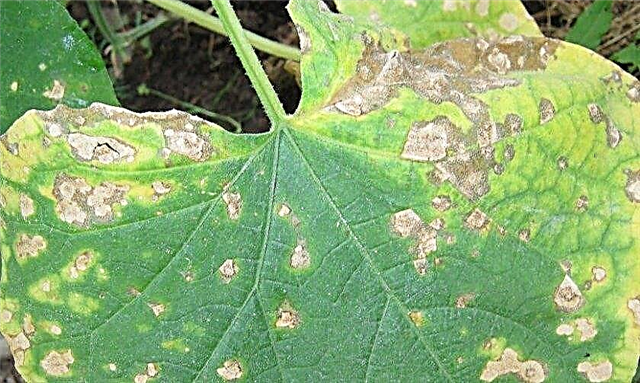
- White rot - the appearance of white plaque on different parts of the plant with subsequent decay. You can treat the disease by removing the affected parts and treating the wounds with a solution of copper sulfate (0.5%).

- Powdery mildew - characterized by the appearance of white plaque spots on the leaves, followed by yellowing and wilting. You need to treat the plant with a 70% colloidal sulfur paste, according to the instructions.
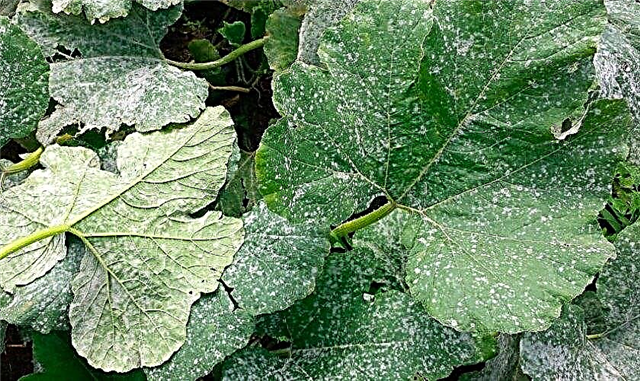
- Spider mite. You can deal with it by spraying plants with acaricide "Keltan" according to the instructions.

- Gourd aphids. The pest can be destroyed by the drug “Karbofos”, which is also used in accordance with the instructions on the package.

- timely weed removal;
- destruction of crop residues after harvesting;
- compliance with crop rotation rules.
Harvest dates and storage
The harvesting period depends on the growing region: in the north it is mid-September, in the south - early October. To collect fruits, a dry, windless day is allocated before the onset of cooling. The fruits are cut with a knife from the stem, leaving a “tail” of 5 cm on the pumpkin. The harvest is stored in a dry and cool room where the pumpkins will ripen.

Pumpkin just from the garden has a mild taste and sweetness, but later, after lying a little, acquires a pleasant sweetness and rich aroma.
Did you know? The largest pumpkin, listed in the Guinness Book of Records, was grown in 2010 in the United States (Wisconsin, New Richmond). The weight of the fetus was 821.2 kg.
So, growing gymnospermous pumpkin at home is quite simple. The main thing is to take into account the main recommendations for care and take timely measures for plant disease, as well as carry out treatment from pests.
Network user reviews
I bought pumpkin seeds in spring in gymnosperm, because I heard that, it’s possible, such a miracle happens, but it was hard to believe until the end. I emptied the seeds from a bag, they looked like ordinary pumpkin seeds, only peeled. To be honest, I thought, like suckers are bred, peeled seeds are given for selection miracles and money is collected. Planted "magic" seeds, and on the 3rd day they COME UP !!!!!! In short, making sure that this is not a divorce suckers, transplanted sprouts to the cottage and that's what happened - my pumpkins grew. But while the pumpkins were not cut, I was still afraid to be disappointed - and suddenly the seeds did not spawn, and suddenly a “miracle” without a shell is born every five years, for example? ?? Now that’s all, you, my recommender friends, are witnesses of an autopsy and tasting experiment the first small pumpkin (and there are big ones)! I cut the pumpkin, and inside - oh, miracle !, there are plump, even, green grains and every single one is PURIFIED! Hurray! In the photo you can see a seed in a section - inside it is white, and everything that is green is thinner than a film. On the palate, they are just super-duper, not even dried crunch deliciously. So, for everyone who is able to grow something, I recommend the PUMPKIN VOTE SEED, and who himself does not know how to cultivate, buy and give your seed for cultivation to some familiar farmer. And I am now waiting for the seeds of sweet seedless seeds to appear potatoes or, at worst, pickled cucumbers!







